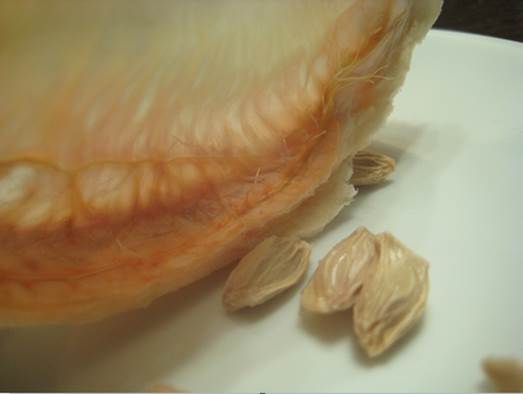

However, studies on the utilization of CMEO extracted from its peel (an agro-food waste) for its insecticidal and pharmacological applications are lacking when compared to other species of citrus. Further, the CMEO has been effective in the suppression of hyphal growth in Aspergillus flavus. Furthermore, significant radical reducing and antimicrobial benefits of the CMEO is reported. Besides, the extracts of the plant peels also inhibit neuro-inflammation and subsequent cognitive impairment. maxima peels exhibit radical inhibitiory and hypoglycemic properties. Studies have indicated the possible uses of C. Among the various species of citrus fruits, the largest one and the least studied is Citrus maxima (L.) Osbeck (synonym Citrus grandis). Essential oils derived from citrus fruits also possess significant activity against mosquitoes. The terpenoids present in citrus essential oils exhibit insecticidal, fumigant, and repellent activity against various insects pests present in warehouse grains. The essential oils of citrus fruits are currently being used as botanical pesticides. Though there are several beneficial effects for the fruits of various citrus plants, their peels are always emerging as the predominant waste products.Ĭitrus plants are well-known for its nutritional and pharmacological effects further these fruits are important sources of essential oils with wide application. Citrus peels are one of the major agriculture waste as well as an worthy source of essential oils that can be commercially exploited as an eco-friendly pest management. Apart from these, the essential oils are also known for their anticancer properties, antidiabetic effects, hypolipidemic effects, and several other pharmacological effects. Various essential oils are effective against insect pests such as Sitophilus sp., Callosobruchus sp., Tribolium sp., etc. The essential oils are emerging tools in the control of pest populations in warehoused grains. īesides antimicrobial properties, essential oils are also known for their potential effects on economically destructive pest species. Essential oils can also alleviate antibiotic resistance in multiple pathogenic microorganisms. It is also evident that these essential oils inhibit the biofilm formation effects of various bacterial colonies. Essential oils are also known to control the population kinetics of microbes, including bacteria, various viruses, infectious fungi and so on. Among these, the essential oils isolated from food wastes can have significant economic value.Įssential oils are important plant-derived compounds with potent biological activities that can be utilizable in agriculture, medicine, and biotechnology. However, the production of bioactive by-products and secondary metabolites is an emerging area of agri-food waste management. The pollution and environmental issues created by agriculture and food wastes are an important and emerging concern. Overall, the CMEO is therefore found to be a bioactive essential oil extracted from the wastes of pomelo ( C. Utilizing a waste product such as citrus peel for pest management can achieve the dual objective of waste utilization and eco-friendly pest management. The biological safety of the essential oil was also tested against the stored seeds, where no significant inhibition of seed germination was noticed compared to the control. Moreover, CMEO showed significant larvicidal activities against Culex tritaeniorhynchus and Aedes aegypti species of mosquitoes however, Armigeres subalbatus was more resistant. The CMEO displayed potentials in controlling the insect pests via contact and fumigant toxicity.

The major terpenoids present in CMEO are Limonene and α-Pinene. The Citrus maxima peel essential oil (CMEO), a waste product, characterized it, and evaluated its potential for insect pest management. The essential oils are also an eco-friendly option for insect pest management. Citrus peels are rich in essential oils and exhibit toxicity towards various insect species. The peels of citrus fruits are often discarded as waste. The wastes generated during the post-harvest handling of various agricultural commodities is rather under-utlilized.


 0 kommentar(er)
0 kommentar(er)
